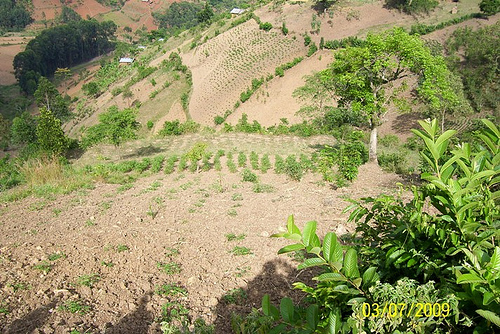
By Conor Godfrey
Last week mudslides in Uganda buried hundreds. Flash floods destroyed lives in Kenya, and deadly riots claimed the lives of 500+ people in Nigeria.
Why do these belong in the same category? In each case lives and livelihoods were lost to environmental degradation.
In the struggle to make people and policy-makers care about the environment, too much emphasis is put on protecting the environment in the long term.
Environmental degradation is killing people right now and costing the developed and developing world alike billions of dollars every year.
In Uganda, the story is straightforward.
Villagers cleared the trees anchoring the soil to make room for crops and feed their cooking fires.
When the skies opened up for three hours straight last Wednesday there were no roots to anchor the soil.
Mountainsides across Africa tell a similar story.
More extreme weather conditions, erratic rainfall and desertification force families to open up more land for cultivation.
Thus begins a series of knock-on effects that makes weather patterns even more extreme and rainfall more erratic, drastically increases the likelihood of natural disaster, and further entrenches the conditions that incented people to abuse the environment in the first place.
Nigeria’s riots epitomize step two in this saga.
As the Saharan dunes encroach on Nigerian farming and grazing land at a rate of .6 km per year, people are forced to abandon harvests and take their animals elsewhere.
Conflict inevitably arises with neighboring groups.
A 3.3% deforestation rate and other forms of degradation create similar dynamics across Africa’s most populous country.
While some commentators frame the recent riots as a religious conflict, I think religion merely deepens the pre-existing cleavages between groups competing for ever scarcer land and resources.
These regions would be prone to conflict even with excellent environmental stewardship, but the environmental degradation is putting competing groups on a crash course and acting as a catalyst for conflict
For too long, pristine forests and endangered baboons have been the faces of the environmental struggle.
Policy makers in emerging economies say that they must worry about people first and the environment second. This is a false choice.
People are exactly what is at stake.
The children buried in a Ugandan school, the dead bodies stuffed in wells in Nigeria, the poachers and rangers killed every year in East Africa; they are as much the victims of environmental degradation and climate change as the disappearing Rhinoceros, or the Cross-River Gorilla.
In this light, why should a state’s failure to act on environmental issues be judged any differently than fermenting instability through funding insurgents, or privileging one tribal group over another?